Efficient management of accounts receivable (A/R) is an essential aspect of every healthcare practice. The effectiveness with which practices handle receivables has a direct impact on cash flow and, ultimately, financial health. A/R management is the process of managing and tracking the money owed to a business for goods or services provided. An effective A/R management ensures that the business receives payment for its services on time, reducing the risk of financial instability. The average range for AR days is 30-50 days, although anything over 50 days could be indicative of financial trouble for your practice.
It wouldn’t be wrong to say that A/R is critical to the financial success of any healthcare practice. Much so, for the pain management groups as there are more revenue roadblocks such as medical necessity denials, billing ambiguities and insufficient benefit verification for procedures like RFAs, DMEs.

Common challenges in Accounts Receivable management
A/R management can be a complex process, and there are several challenges that pain management groups may encounter.
1.) Delayed payments: One of the most common challenges is delayed payments, which can result from insurance claim denials or delays.
2.) Lack of clear communication: Miscommunication with patients regarding their financial responsibility. This can lead to confusion and delayed payments.
3.) Insurance coverage: Insurance coverage can vary for pain management services, depending on the type of insurance, specific procedures, and the patient’s diagnosis. This variability can pose challenges in determining which services are covered and which ones are not.
4.) Changing regulation: The regulations governing pain management billing and coding are constantly changing, making it difficult to keep up with the latest requirements and guidelines.
5.) Compliance issues: Providers of pain management services must ensure that their billing and coding practices align with various laws and regulations, including the Health Insurance Portability and Accountability Act (HIPAA) and the False Claims Act. Non-compliance can lead to penalties, fines, or legal consequences.
6 tips for streamlining Accounts Receivable management in Pain management groups

1.) Investing in A/R management software
Investing in A/R management software can help streamline the process and improve efficiency. The software can automate tasks such as billing and claims processing, reducing the risk of errors and delays. Additionally, the software can provide real-time data on accounts receivable, allowing for better monitoring and analysis of the revenue cycle.
2.) Ensuring data security and compliance with A/R-driven systems
While embracing A/R technology, it is crucial to prioritize data security and compliance with healthcare regulations. Ensure that A/R-driven systems and platforms adhere to the necessary privacy and security standards, such as HIPAA. By implementing robust security measures and maintaining compliance, pain management groups can instill trust and confidence in their patients, protecting sensitive financial and personal information.
3.) Simplifying insurance claims with A/R-assisted documentation
Dealing with insurance claims can be a time-consuming and error-prone task. However, A/R can assist pain management groups in capturing and documenting accurate patient information. Accounts receivable solution can facilitate real-time data collection, reducing the risk of errors and improving the efficiency of insurance claim submissions, ultimately speeding up the reimbursement process.
4.) Providing patient payment options
Providing patients with payment options can help improve the collection of outstanding balances – offering payment plans or accepting credit card payments. By integrating A/R technology, pain management groups can provide patients with interactive and user-friendly payment options which also increases the likelihood of timely payments and reduces the risk of delayed payments. For instance, A/R–generated invoices can offer detailed information about services rendered, making it easier for patients to understand and resolve payment-related queries.
5.) Staff training and monitoring
Staff training and monitoring can help improve the efficiency of A/R management processes. Providing training on billing and claims processing, as well as educating staff on the importance of A/R management, can help reduce errors and delays. Additionally, regular training can help ensure that staff are up to date on any changes in regulations or policies.
6.) Outsourcing accounts receivable management services
Outsourcing A/R management services is another option for pain management groups which can help reduce administrative costs and improve the efficiency of the revenue cycle, freeing up valuable time and resources that can be used to grow and focus on other important aspects of your business. The right outsourcing partner handles all of the tasks related to accounts receivable, including invoice management, collections, and more.
Conclusion
Streamlining accounts receivable management is crucial for pain management groups to maintain a healthy financial status. Implementing the six tips discussed in this article can help improve the efficiency of the revenue cycle, reduce administrative costs, and increase profitability. By understanding the accounts receivable process, identifying common challenges, and implementing best practices, pain management groups can optimize their accounts receivable management processes and maximize profitability.
Providers can partner with an RCM company to help them with A/R-related challenges, optimize costs and improve collections. Learn how we recently helped a pain group reduce their average claims pending ratio by 50%, process claims timely & improve revenue growth by 30%.







